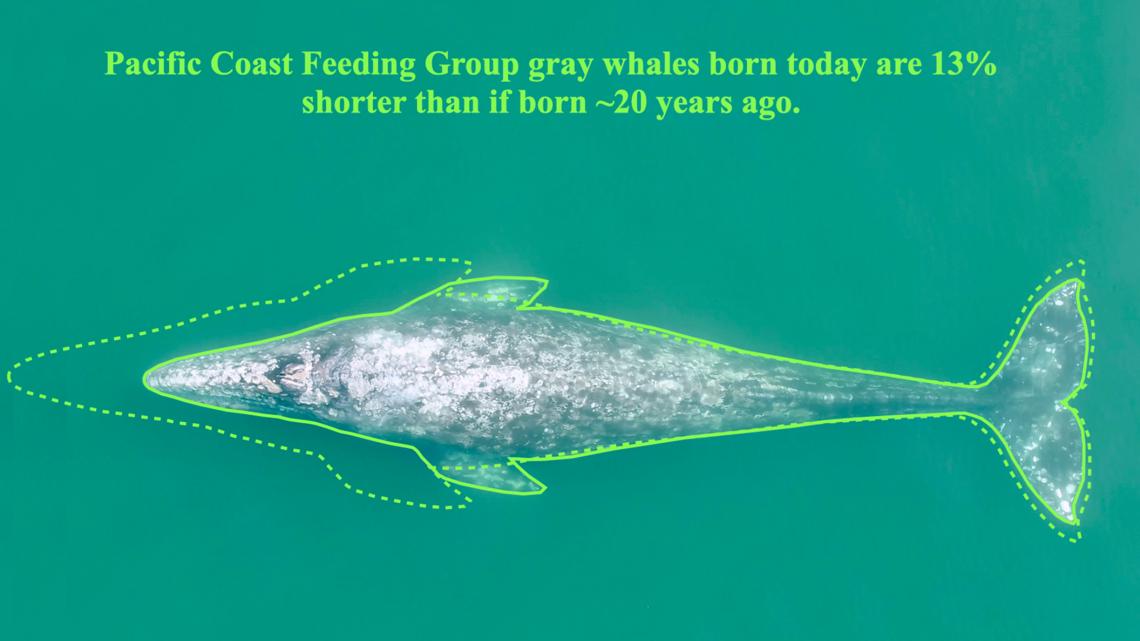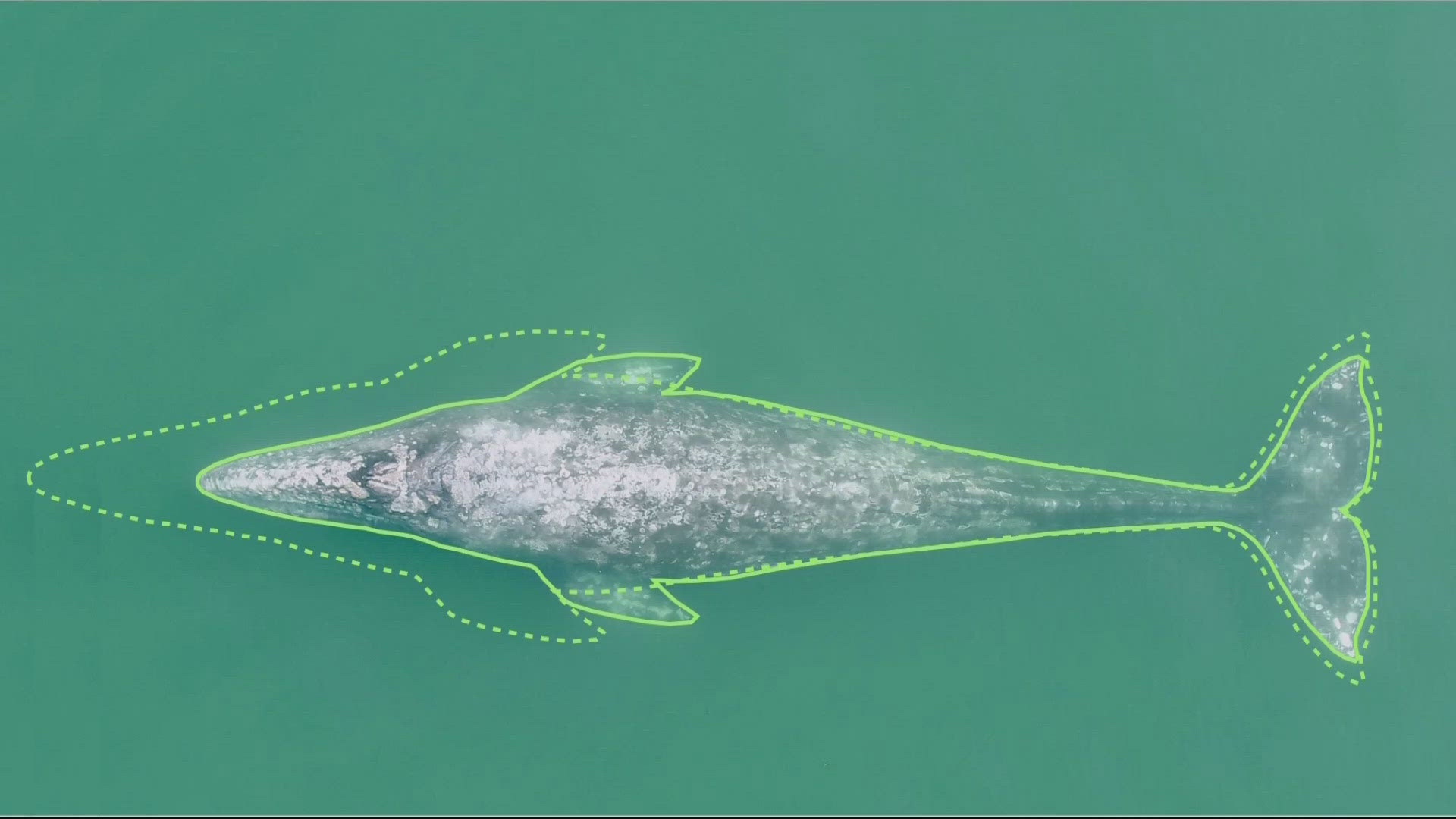PORTLAND, Ore. —
A subset of Pacific gray whales that spend their summers off the Oregon Coast have seen a dramatic reduction in size over the last 20 years, according to new research from Oregon State University.
That could spell trouble for the iconic species, which brings many whale watchers to coastal towns, and the food web they rely on.
KC Bierlich, a research professor at Oregon State’s Marine Mammal Institute and one of the authors of the study, said the findings are foreboding.
“There's been a lot of evidence that when animals' body shape changes and particularly shrinks, that could be early warning signs that the population is, you know, leaning towards declining or maybe even collapse,” he said.
After migrating to Mexico in the winter to give birth, most gray whales head to the Arctic to feed in the summer months. A subset of roughly 200 whales, known as the Pacific Coast Feeding Group, stops in Oregon and feeds in the shallow waters off our rocky coast.
It’s unclear, Bierlich said, if the change in body mass is affecting the species as a whole or just the smaller subset.
But the change is not a trivial one.
Gray whales grow to roughly 40 feet in length. Bierlich’s study showed that whales documented between 2016 and 2022 were more than 5 feet shorter than their counterparts documented between 1980 and 2000.
“The lengths are kind of pretty steady from 1980 till around 2000,” he said. “Then there's a sharp decline that happens pretty drastically.”


To put that in a human context, that’s akin to the average height of a person dropping from 5 feet, 5 inches tall to just 4 feet, 8 inches tall over just two decades.
Bierlich explained that gray whales rely on fat reserves for energy. When body mass is reduced, that leaves them with less energy to rear calves or recover from trauma like ship strikes or entanglements in fishing gear.
The reduction in size was more pronounced in females, Bierlich said.
“They incur the major costs of reproduction,” he said. “They need to store enough fat to produce a calf and to be able to provide milk to that calf and make sure that calf grows, so they have a big burden.”
Just why the whales are shrinking is an open question, Bierlich said, though there are hints that changing ocean conditions could play a role.
Strong winds off the Oregon coast often produce periods of upwelling, when nutrient-rich waters are pulled from deeper to shallower waters. When those winds die down, so-called “relaxation” periods set in, when those nutrients can remain in the shallows as food for tiny organisms that act as prey for species like the gray whale.
Data showed that the decrease in whale size coincided with a change in the upwelling and relaxation pattern, said Leigh Torres, another author on the study.
“Without a balance between upwelling and relaxation, the ecosystem may not be able to produce enough prey to support the large size of these gray whales,” Torres said in a statement.
Bierlich said the findings present a lot of new questions to pursue. Among them, whether the same decrease is present in the larger population of gray whales in the Pacific, which numbers more than 14,000.
Whatever the cause, the effect remains a cause of great concern, he said.
“It's kind of the huge red flag when we see a shrink like this, particularly so drastic and just in the past 20-plus years,” he said.

